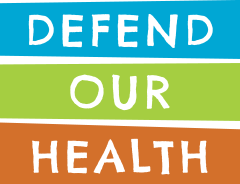Home > Executive Summary
Executive Summary
We believe that petrochemical plastics are unsafe, unjust, and unsustainable due to their lifecycle impacts. Plastic pollution is much more than a waste problem. Before being thrown away, petrochemical plastics can threaten human health, cause environmental injustice, and fuel the climate crisis.
This report investigates the impacts of one of the most widely-used plastics, known as PET (for polyethylene terephthalate) and as “polyester” in its fiber form. While PET is but one of several problematic plastics, it is emblematic of concerns that may exist with all petrochemical plastics.
We chose to closely examine PET (including polyester) because of its major production volume, its reliance on toxic chemicals and plastic additives that can threaten human health, and the mismanagement typical of the end of PET products’ short life-cycle. Like other petrochemical plastics, PET can also contribute to environmental racism and increases greenhouse gas emissions. While chemistry and other details vary, many, if not most, petrochemical plastics implicate similar concerns.
PET is the most common material used to make plastic bottles, cuddly stuffed toys, and clothing. It can pose hidden health hazards to young children and other consumers. Our investigation of PET found unsafe levels of plastics-related chemicals in some beverages packaged in plastic bottles.
The toxic element antimony is a plastics processing aid used to speed up the final chemical reaction that produces PET resin and polyester fiber. Some of the antimony remains in the final PET product and can make its way into the food and beverages that are packaged in PET bottles and containers. Defend Our Health tested samples of twenty major brands of beverages packaged in PET plastic bottles to evaluate the amount of antimony present in the sampled beverages.
In nearly half of the PET plastic-bottled beverages we tested (40%), the concentration of antimony in the drink itself exceeded 1 part per billion (ppb), the California Public Health Goal for drinking water. Daily exposure above this amount may cause liver disease. Excess exposure to antimony compounds may also increase the risk of cancers, heart disease, and other organ toxicity.
Antimony in 90% of the beverages we tested exceeded 0.25 ppb, a more protective health limit recommended by Defend Our Health to better account for typical daily antimony exposures from other sources.
Higher amounts of antimony leach into food and beverages when PET plastic bottles and food trays are heated, stored, exposed to light, or used to package acidic beverages such as juices and carbonated soft drinks.

Babies and toddlers who suck on soft cuddly toys (such as stuffed animals), blankets, clothing, and other polyester items may also be exposed to unsafe levels of antimony.
PET plastic can threaten children’s health because many kids are likely already exposed to unsafe levels of antimony from a combination of sources to which they are routinely exposed. Antimony is added to many other plastic products, including electronics and home furnishings, to enhance the effect of flame retardant chemicals. Those products can release antimony in the home, which builds up in house dust. Toddlers may then ingest household dust containing antimony from frequent hand-to-mouth activity. We calculate that young children are likely exposed to almost three times as much antimony per bodyweight as adults
in the U.S.
This concept of “aggregate risk” from total exposure to all sources of a chemical is comparable to filling a bath for your child in the tub. You don’t let the faucet run until the tub overflows and then keep adding water. Similarly, antimony exposure from PET plastic and polyester adds to health risks that may be already overflowing, worsening the
overall impact.
PET plastic and polyester can contribute to environmental racism and injustice. On a nationwide basis, Latinx and Black consumers are exposed to higher levels of antimony in general than white Americans, and at nearly twice the amount in the highest exposure groups, according to the National Biomonitoring Program.

Production of petrochemical plastics, including PET, is concentrated near lower-income communities and communities of color. Black and Brown residents and poor people, in a greater percentage than the national average, are surrounded by more than twenty petrochemical manufacturing plants that directly supply petrochemicals used in PET plastic production in North America. PET plastics-related chemical plants near communities that are already heavily over-burdened with industrial pollution from many sources manifest an even greater injustice. The majority of PET plastics-related chemical plants in North America are located in Texas, Louisiana, Alabama, South Carolina, North Carolina, and Mexico.
Almost all petrochemical plastics, including PET, are unsustainable materials. More than 99% of PET plastic is made from non-renewable fossil carbon extracted from the earth by drilling and fracking for crude oil and natural gas. Greenhouse gases emitted by the production and disposal of petrochemical plastics are fueling the climate crisis.
Most PET plastic is used only once and then thrown away. Only about 11% of the PET and polyester produced has ever been recycled, and nine times out of ten it is recycled for just one more use. Although the recycling rate for plastic bottles has grown to almost 30%, two-thirds of all PET takes the form of polyester fiber. Less than 1% of clothing, where polyester dominates, is ever recycled. Most PET recycling simply turns plastic bottles into lower quality polyester fill, a phenomenon known as “down-cycling.”
The petrochemical plastics industry profits from this extractive, one-time use model, and encourages ever-increasing plastics demand. The industry has grown exponentially since 1950, and recent petrochemical industry growth projections indicate plastics production will double by 2040.
Two proposed new chemical plants would worsen the adverse impacts of PET plastic
The proposed Corpus Christi Polymers plant in Texas would increase PET plastics production capacity in North America by nearly 25%, producing 1.1 million tons per year. A joint venture between three large existing PET producers – Indorama Ventures of Thailand, Alpek of Mexico, and Far Eastern New Century from Taiwan – this would be the largest PET plant in the world. Much delayed already, the plant could go online in 2024.
The proposed Formosa Plastics chemical plant planned for Welcome, St. James Parish, Louisiana would produce 1.6 million tons per year of monoethylene glycol (MEG), a building block chemical essential for PET production, as well as massive amounts of polyethylene plastic. Globally, 80% of MEG is used to make PET plastic and polyester.
Local residents and health advocates have vigorously opposed the siting of this chemical plant as environmentally racist and a threat to public health. Formosa’s operations would drive up emissions of cancer-causing ethylene oxide, a byproduct of MEG production. Construction of this plant is on hold pending completion of a federal Environmental Impact Statement that must consider the cumulative impacts and environmental injustice faced by local residents from the many existing industrial polluters in “Cancer Alley”.
Petrochemical pollution from PET and other plastics can and must be stopped
Preventing plastic pollution must begin at the source. Elimination of unnecessary uses and substitution with safer, more sustainable solutions should be the top priority. Recycling is a stopgap measure that alone cannot solve the plastic problem.
Corporate and government leaders, responding to demands from organized consumers and voters, should undertake a series of immediate and longer-term actions to prevent petrochemical plastic pollution. With the end goal in mind, these actions – many of which have been endorsed by scientists and market leaders – should include:
- By 2040, the use of virgin fossil PET plastic and polyester should be phased out
- By 2030, replace 50% of PET bottles and packaging with reusable and refillable systems
- By 2030, substitute 50% of virgin polyester with recycled clothing or natural fibers
- By 2030, replace 50% of PET with 100% non-toxic biobased PET or bioplastics such as PEF
- By 2025, meet the industry’s Recycled Polyester Challenge to increase the recycled content of polyester to 45% (on the path toward achieving a 90% share by 2030)
- By 2025, meet the industry pledge to eliminate unnecessary and problematic plastic materials (e.g. opaque or pigmented PET plastic bottles, and PETG in rigid packaging)
- By 2025, assess the hazards of all chemical substances used or produced to make PET
- By 2024, eliminate chemicals of high concern as PET plastic additives and processing aids
- By 2023, end all use of antimony and cobalt compounds in PET plastic and polyester
Through such actions, we can effectively transition away from dependence on PET and other petrochemical plastics in favor of safer and more just and sustainable materials and other solutions that meet the needs of society with less risk of harm to people and the planet.

